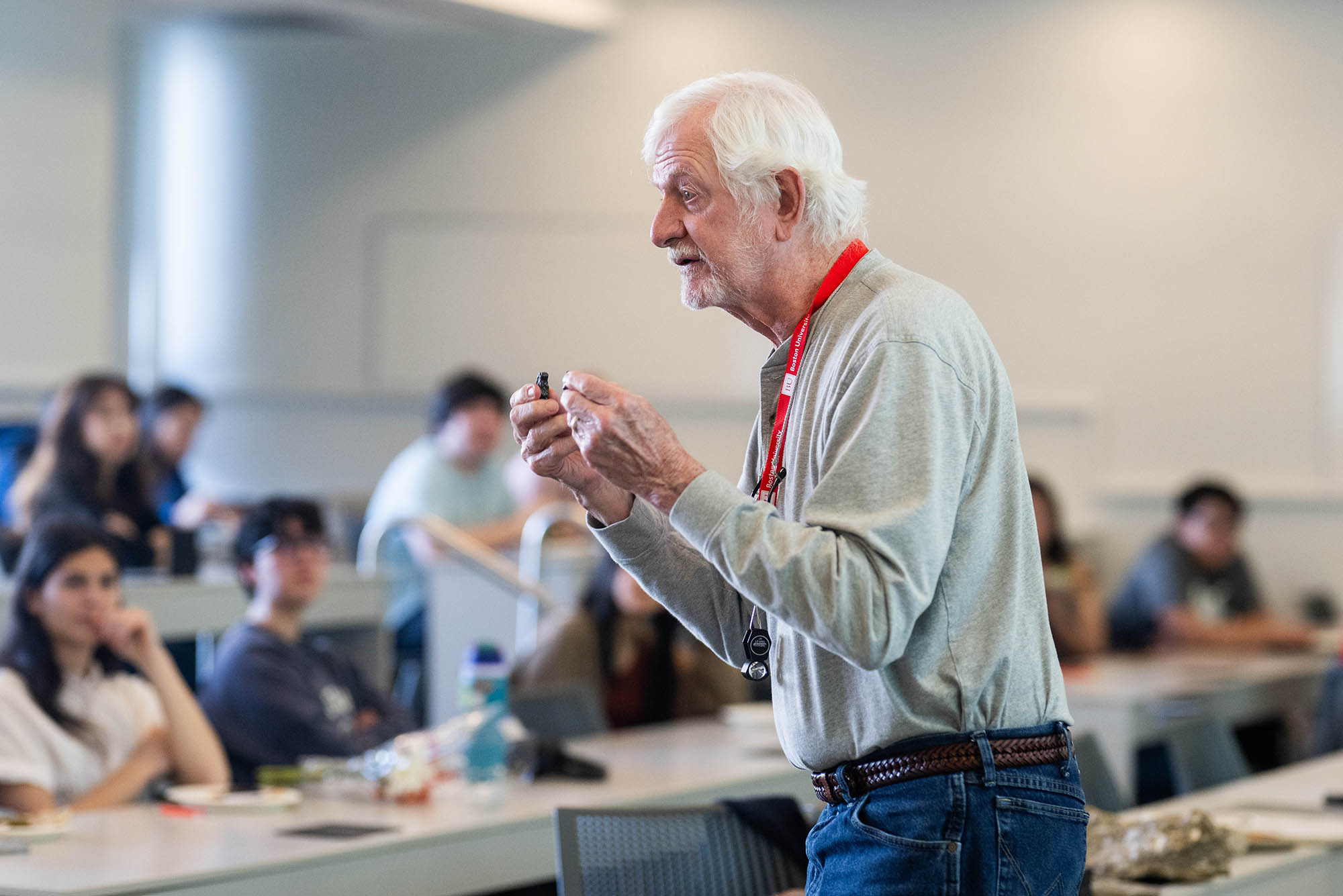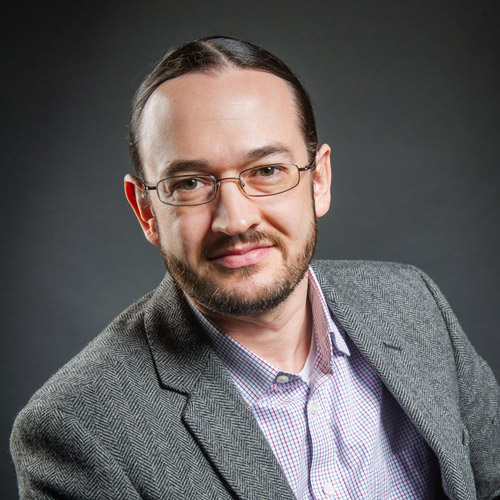For 50 Years, BU’s Lawford Anderson Has Been Helping Students Unlock the Secrets of Earth’s Rocky Materials
CAS geologist teaches students how to read, talk to, and listen to rocks to discover their stories
For 50 Years, BU’s Lawford Anderson Has Been Helping Students Unlock the Secrets of Earth’s Rocky Materials
For 50 Years, BU’s Lawford Anderson Has Been Helping Students Unlock the Secrets of Earth’s Rocky Materials
When you walk into Lawford Anderson’s office, the first thing he’s likely to ask is: “Do you want to hold a shooting star?” He’ll then lead you to a shelf and place a small rock in your hand—made of the same material as a shooting star.
That rock is one of just dozens that he has displayed around his office. Anderson, a College of Arts & Sciences professor of Earth and environment, has always had a deep love for geology.
For 50 years, he’s been instilling his passion and excitement for rocks in the students in his Earth’s Rocky Materials class, first at the University of Southern California, and since 2011, here at Boston University.
The class offers a deep dive into the history and evolution of Earth’s materials and how those materials go on to become the rocks surrounding us in our everyday lives. Students get a chance to learn a great deal about rocks, from how to identify them to how to analyze their age. “Students learn empowerment, that they can discover the story of each rock and tell that story,” Anderson says. “Every rock has a story, but the rock can’t tell its story. Our students can tell that story.
Anderson began college in his native Texas as an engineering major. He soon discovered that it wasn’t for him, but he was unsure about what to pivot to. One day, walking through the halls of San Antonio’s Trinity University in search of inspiration, he passed through the geology department, stopping to examine a display of minerals and fossils. It turned out to be a turning point.
“I’d been collecting fossils and minerals my entire life,” Anderson says. “I didn’t know it was a major. So, I walked into the department and I said, ‘Can I major in this?’ and they said, ‘Well, sure!’”
After completing his undergraduate degree, Anderson earned a PhD from the University of Wisconsin, Madison, writing his dissertation on granites—work that would take him around the world, from India to Finland. Some of the rocks he studied for his doctorate are displayed in his office.
Anderson’s first job in academia was as a USC assistant professor. He recalls his initial anxiety about being in front of a classroom.
“I had to get over my fear of teaching and being in front of all these students,” Anderson says. “I got over my fear, and I felt their warmth, because I’ve now looked at them in their eyes and they’re starting to smile. I had to learn to teach.”
USC was where Anderson first taught mineralogy and petrology, the core areas of study he teaches in Earth’s Rocky Materials. (Core areas? That’s a rock joke.)
Lawford hasn’t changed the course much over the past five decades, despite a move from the West Coast to the East Coast. At the end of the day, he notes, “it’s all rocks.”
One thing that continues to make the course so popular is that it’s geared to all kinds of students. “Half of them are not geology majors,” Anderson says. “I’m not trying to convert them. I’ve got business majors and economics majors. I’ve got an artist. Every one of them brings different eyes, but they like rocks and they heard this class is fun.”
And fun it is. Shelby Rose Long (CAS’27) was majoring in journalism when she began looking to take more Earth and environment classes. “I walked in there, and I didn’t have a clue who any of these people were. And now, it’s like the weirdest little family with the weirdest granddad,” she says, referring to Anderson. Long is now an Earth and environmental science major.
Anderson takes his Earth’s Rocky Materials students on field trips to areas where they can see rocks in their natural environment. During one outing, students get to try their hands wielding a rock hammer—using it to chip off a sample of rock that will become their personal project for the rest of the semester. The students’ samples are sent off campus to be cut into sections so thin that they can be examined under a microscope.
Kaitlyn O’Callaghan (CAS’25), current president of the BU Geological Society, entered BU as a computer science major. Now an Earth and environment major, she says Lawford’s course has totally changed her perception of rocks, which are so ubiquitous that people often take them “for granite.” (Another rock joke—Lawford’s informal style tends to encourage a lot of rock humor.)
Anderson says what drives him as a teacher is his students. He loves “opening the door,” he says, and watching them “navigate the discovery of new knowledge.”
Early in his career, when he still lacked confidence as a teacher, an older professor gave Anderson a piece of advice that he still takes today: learn every student’s name. At the beginning of every semester, he takes a picture of each student holding a sign with their name on it, as an aid to memory. He jokingly refers to them as mug shots.
Anderson does not plan to retire any time soon. He jokes that he has to be more careful going down stairs, but that he wants to continue helping students “get to that next place.
“I enjoy my students,” he says. “I don’t just teach them—I show them new pathways.”


Comments & Discussion
Boston University moderates comments to facilitate an informed, substantive, civil conversation. Abusive, profane, self-promotional, misleading, incoherent or off-topic comments will be rejected. Moderators are staffed during regular business hours (EST) and can only accept comments written in English. Statistics or facts must include a citation or a link to the citation.